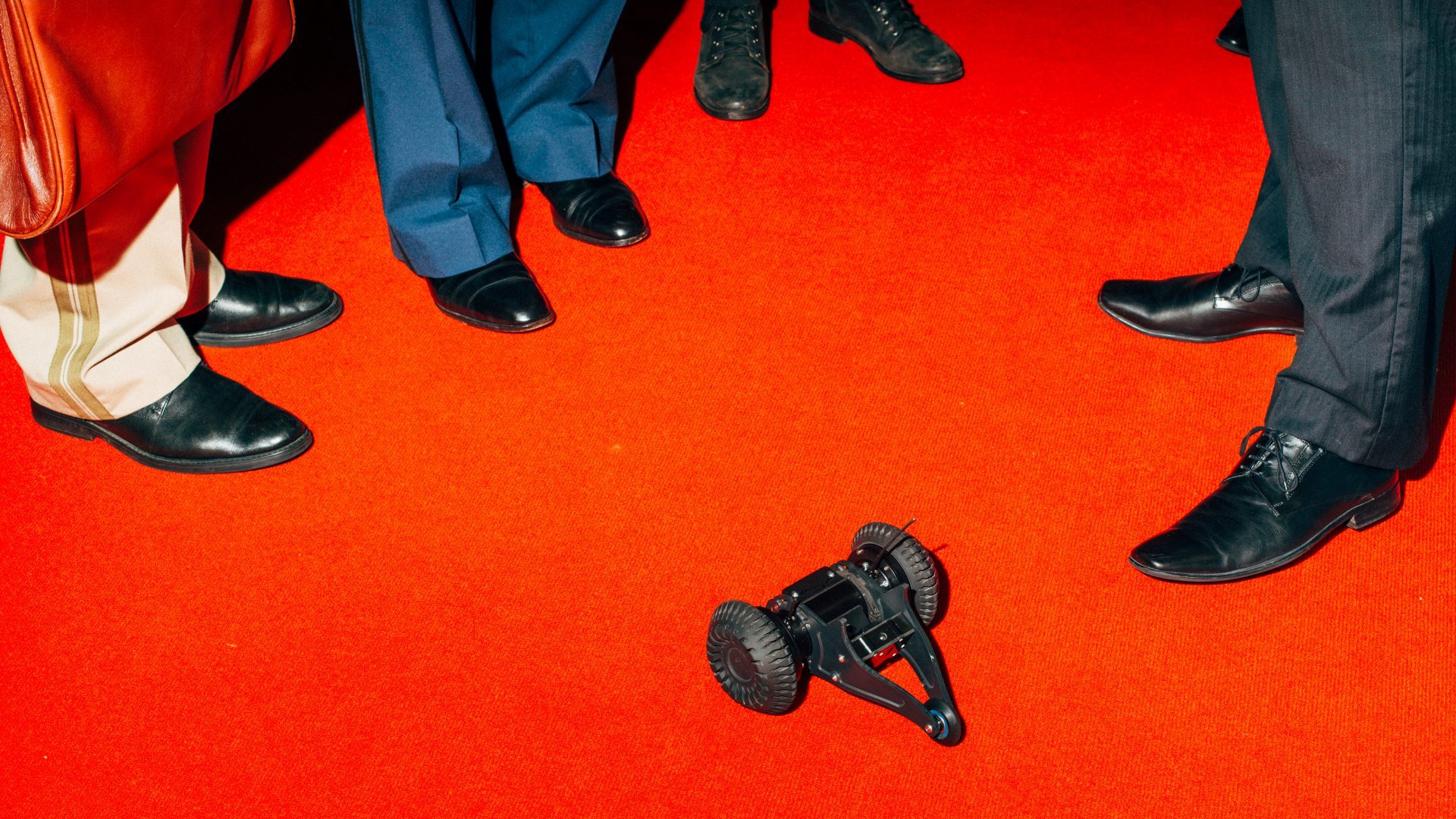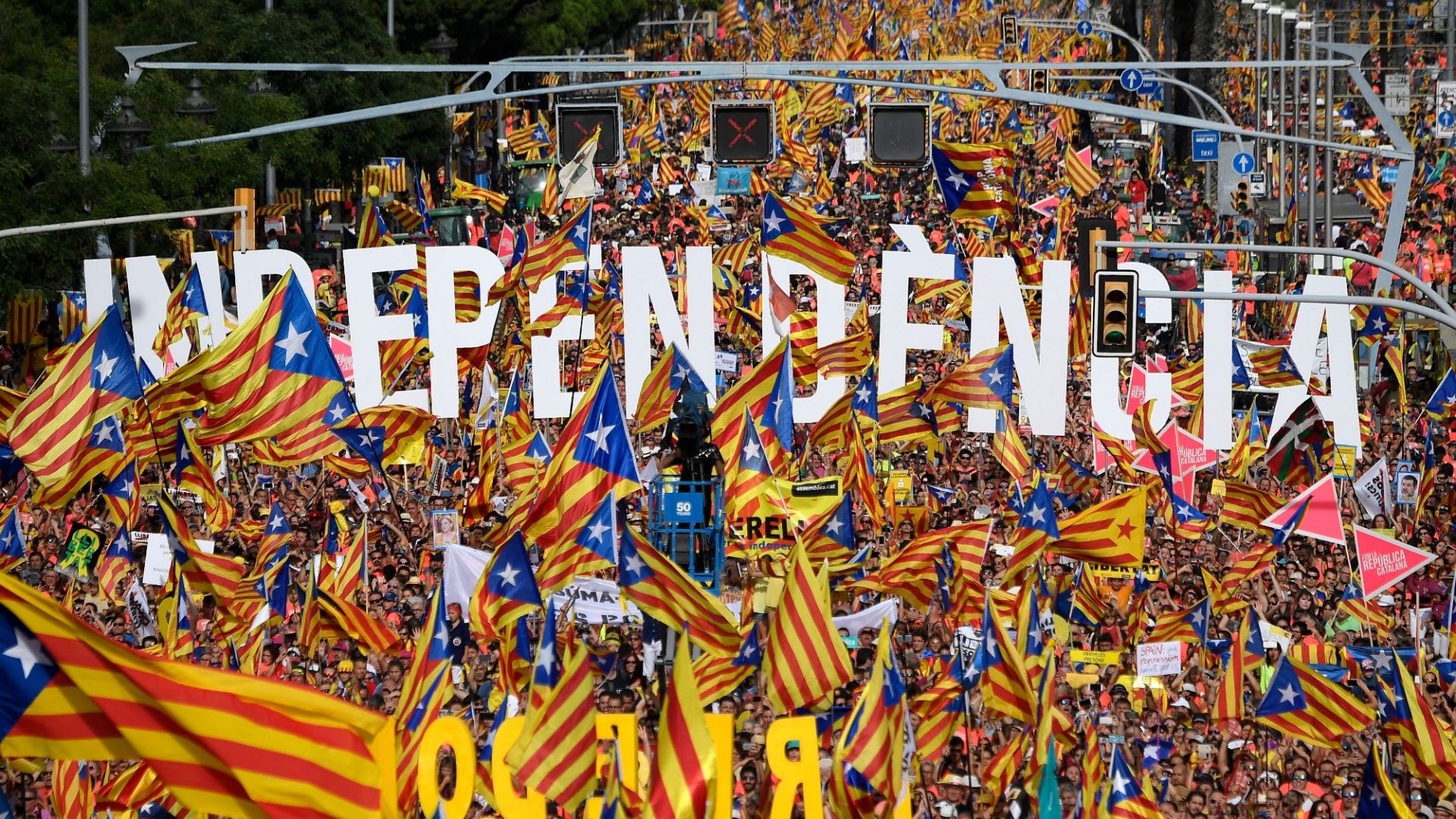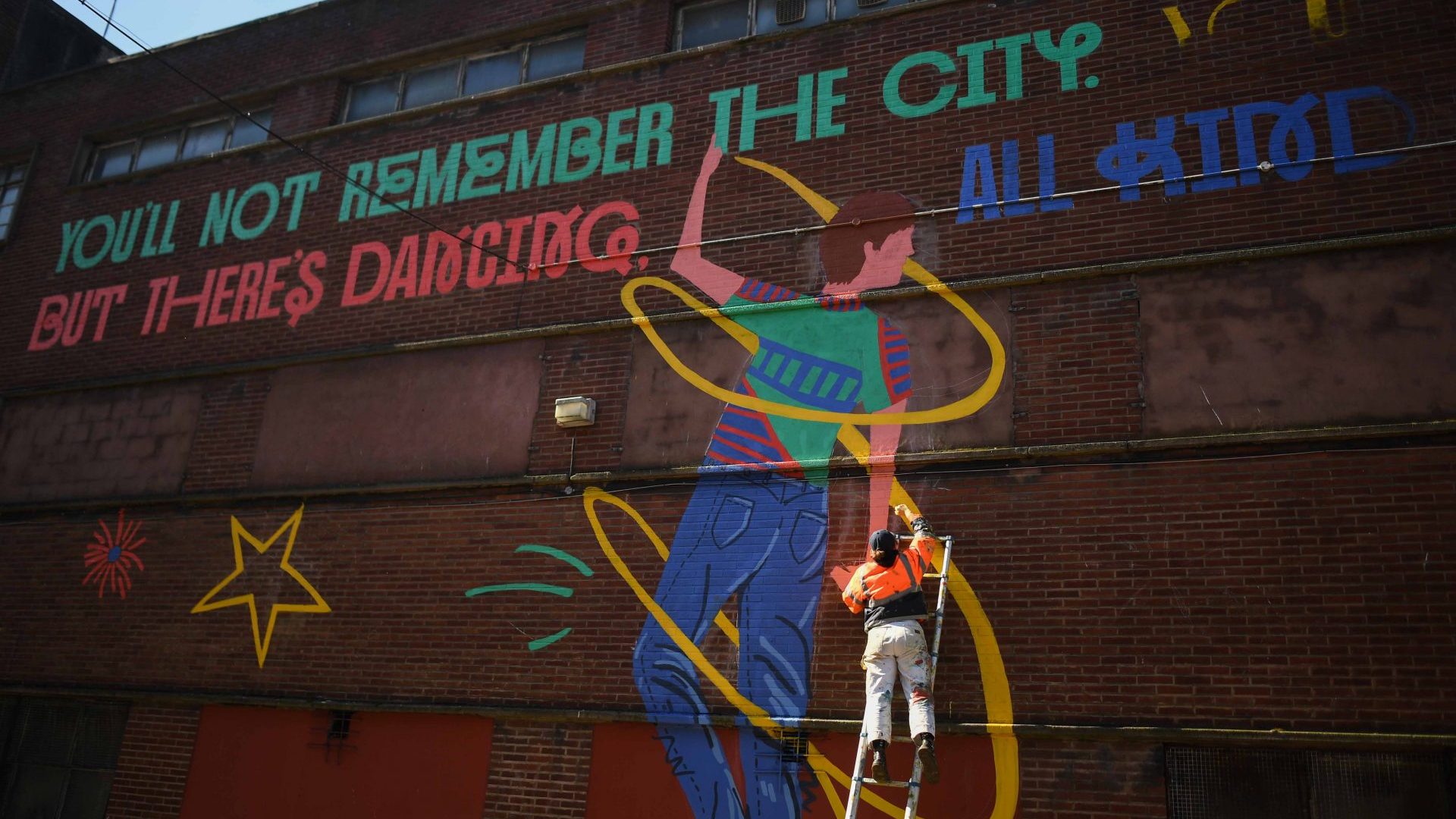What a show. Buildings blown up, soldiers running for cover on a murky landscape as one lies wounded. Smoke billows from a blazing truck outlined against a forested hillside. Fighter jets roar and helicopters clatter overhead.
But hang on. There’s a cameraman on the lookout post and another in the middle of the action. What’s going on?
It’s an elaborate war game, but there’s nothing playful about it. These dramatics were part of the opening ceremony in 2019 of the International Defence Exhibition and Conference (Idex), aka an arms fair, held in Abu Dhabi.
The onlookers munched sandwiches and treated themselves to Black Forest gateau and dinky bowls of fruit desserts, sipping juice as the game was played out. And then it was down to business. The war business.
It’s a secretive affair, the arms trade. Reliable facts and figures of imports and exports are hard to come by in the Byzantine world of the military marketplace, although the Stockholm International Peace Research Institute (Sipri) estimates that the total value of global arms trade was at least $127bn in 2021. British arms exports doubled during 2022 to a record £8.5bn, while the US and Russia were responsible for more than half of the world’s exports of major conventional arms from 2018-2022. The states importing the most during the same period included India, Saudi Arabia, Qatar, Australia and China.
So the companies represented at arms fairs like this have high stakes to play for, hard bargains to drive and covert deals to make.
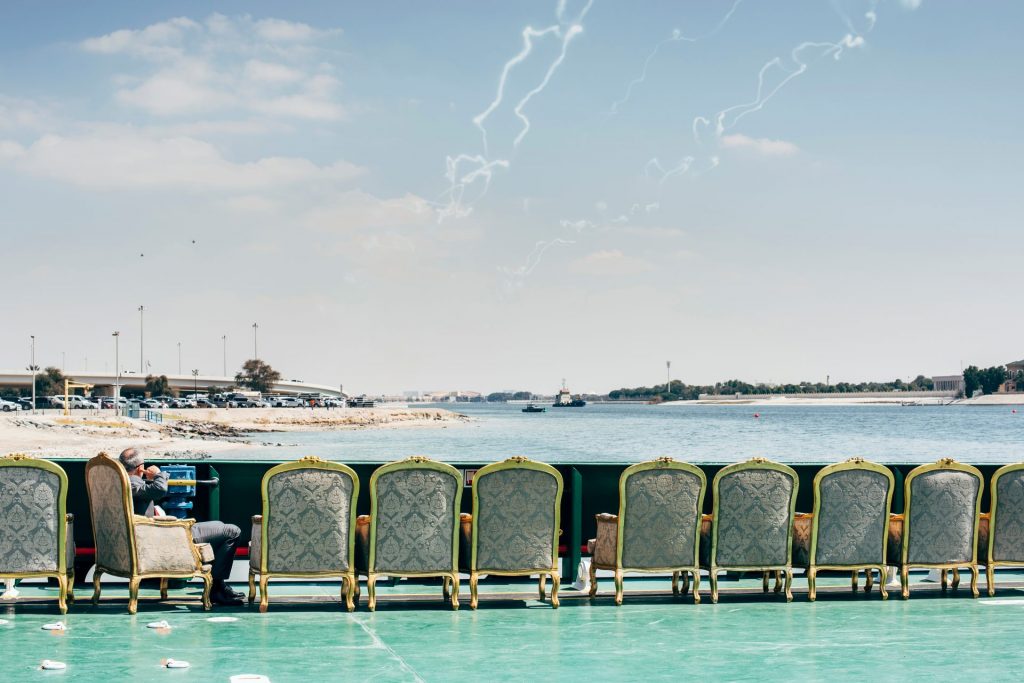
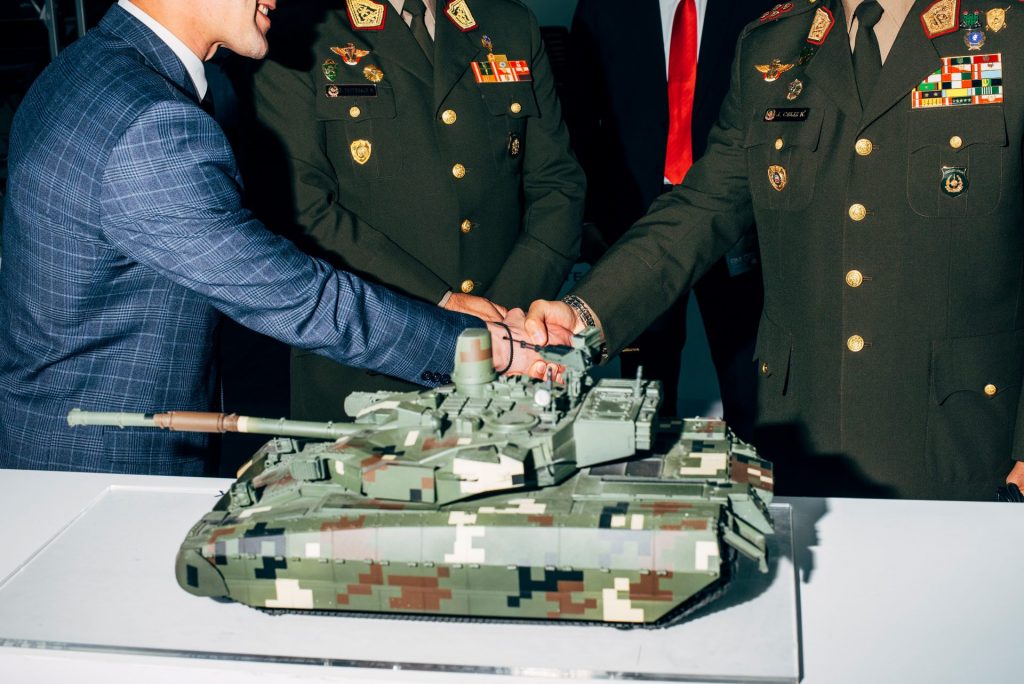
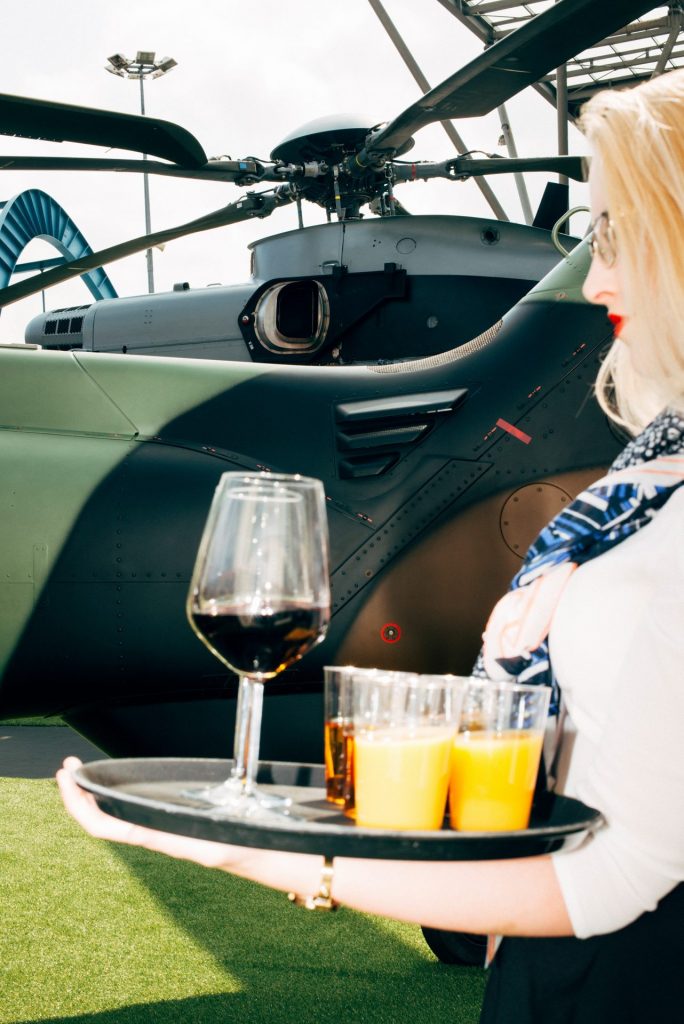
Photographer Nikita Teryoshin has covered 16 arms fairs over seven years, including in Poland, Belarus, France, India, China and the US.
The result is not what one might expect. Nothing Personal – The Back Office of War, a book by the publisher Gost, does indeed show us weapons in all their gleaming menace – the drones, the machine guns, guided missiles, tanks, even fighter planes – but Teryoshin places them within the context of a marketing jamboree, a money-spinning sub-culture where the men wear shiny suits, and generals and heads of state sport be-ribboned uniforms and braided military caps. And there is plenty of cake.
The effect is an incongruous combination of the deadly and the banal.
For example, a reception by French Airbus Helicopters in Kielce, Poland in 2016 proudly presented a Tiger helicopter. In the foreground, an inviting tray of red wine and orange juice for possible buyers delivered by a blonde waitress. A cliche straight out of the Mad Men playbook in 1972.
The air of unreality is heightened by Teryoshin’s technique of not showing the faces of the protagonists.
A line-up of high-ranking guests smartly dressed for an opening event in Washington DC is taken from the chin down, but the long list of affiliations draping down from their lapels is testimony to their status.
The face of a Tanzanian general is hidden by his iPad as he films China’s Mighty Dragon jet fighters tearing across the sky. Only the red and gold on his cap and the braid cascading down his uniform tell us this is a man of some importance.
Counterintuitively, the shadowy nature of the events and the participants is emphasised by the way Teryoshin uses flash to produce images as bright as a bomb blast in the Idex war game.
“I don’t want to blame or identify the people,” he explains. “Sometimes they are working for a small company making, say, off-road vehicles or small pieces of equipment, not bombs. If you show faces it becomes a story more about the people and I wanted them to be anonymous so that I could concentrate on the system behind the fairs. It works also as a metaphor because the industry does not want too much publicity.”
Based in Berlin, Teryoshin, 38, was born in St Petersburg, Russia, before moving to Germany. He began photographing all types of fairs – agriculture, pets, funerals – but when he went to a hunting fair he was surprised how much the visitors, young and old, were attracted by the guns.
“They loved aiming and shooting,” he recalls. “So I thought I would find out what happens at professional arms fairs, and I went to one of eastern Europe’s biggest in Kielce, Poland.
“At first I was totally shocked, then I got used to it, until about five or six years later when I began to feel really angry… about all those men in their grey suits. World leaders such as Emmanuel Macron and Angela Merkel would turn up to show their support and I saw that mankind was selling these weapons like vacuum cleaners, and seemed to be totally OK about it.
“Mixing capitalism and stock markets with the arms trade is one of the worst things that can happen. Now I believe that arms fairs are the most cynical places on the planet.”
If they are, it follows that the players are without any sense of shame or embarrassment. How can they be, with marketing slogans such as “We believe every gun should shoot like new. Whenever. Wherever, Forever.” Or the boast of an Indian-Russian missile producer: “Fast. Precise. Deadly.”
How about “Unmatched lethality at any distance?” Some years ago the Swedish arms company Saab chose as a slogan “See first, kill first”, which startled even the most hardened observers, and was withdrawn.
Teryoshin has captured what amounts to an almost cultish mix of the boastful and the businesslike, and he has done it with a quiet, understated mockery.
At the Polish expo, an Italian Leonardo AW149 helicopter with gun pods and guided missiles alongside a W-3PL helicopter are artfully half hidden by foliage. A blonde woman – of course – looks on admiringly.
Another woman tucks into a feast of finger food at a stall presided over by a model of a Swedish Bofors 57 Mk3 naval gun looking very much like a Dalek.
Clearly food and drink are almost as important as the goods themselves. Eager fairgoers at Abu Dhabi’s 25th anniversary ravage a huge chocolate cake set on a table beside imitation bullets and the model of a combatant.
And how could anyone be expected to concentrate on the spec of the fearsome x95 Assault Rifle on show in Paris without a drink and handful of Smarties?
There is an incongruity about the shiny-suited backside of the dealer crawling between the huge tyres of a Finnish armoured vehicle to get a closer look at the chassis, and the marketing overload of a bus stop decorated with missiles blasting skywards.
Reality rarely intrudes. Buyers can have fun mowing down on-screen enemies with a machine gun and a group of children in the US play with rifles while a potential buyer checks out a wall-full of lethal wares.
The only reminder of why everyone is there – helping to have people killed – is Majid, a mannequin who is sold by a German scientific company for first aid practice. He is not a pretty sight – his body covered with bruises and blood, one leg a gory mess, the other sticking out at an ugly angle.
He’s horribly realistic and might make a dealer pause for thought as he – though judging by the red nails squeezing the trigger it is a she – enjoys the frisson of controlling a French Mistral Atlas twin missile launcher.
But probably not. The conflicts in Gaza and Ukraine have been a boost to manufacturers and brought extra business to the fairs. The US has given $44.9bn to Ukraine (as of December 27, 2023) and the UK $12bn. As for the war in Gaza, according to the Qatar broadcaster Al Jazeera, Israel is bolstered by more than $3.8bn of military aid a year from the US.
For Teryoshin, the fairs and what they represent have gone too far.
“The more you invest in weapons, the more they are going to be used, and that is wrong in terms of politics, economy and morals. We should think about the more important things happening on our planet, like climate change. At some point I decided I’d had enough. I needed something to balance what I was doing.”
What he found were cats. In Backyard Diaries – Hidden Worlds of Urban Cats, he has photographed feral cats, sick cats, cute cats, injured cats.
“In my eyes they are something beautiful and special. They are the opposite of the people working in the fairs. They are harmless. They have nothing.”
Try explaining that to the salesmen who gather in the Idex cafe decked out like a military camp, with a barista in a camouflage T-shirt and cap waiting to take your order.
Combat Quesadillas with Dynamite Chicken anyone? Or how about Sniper Fries and a Task Force Hot Dog?
Nothing Personal – The Back Office of War by Nikita Teryoshin is published by Gost, £45


